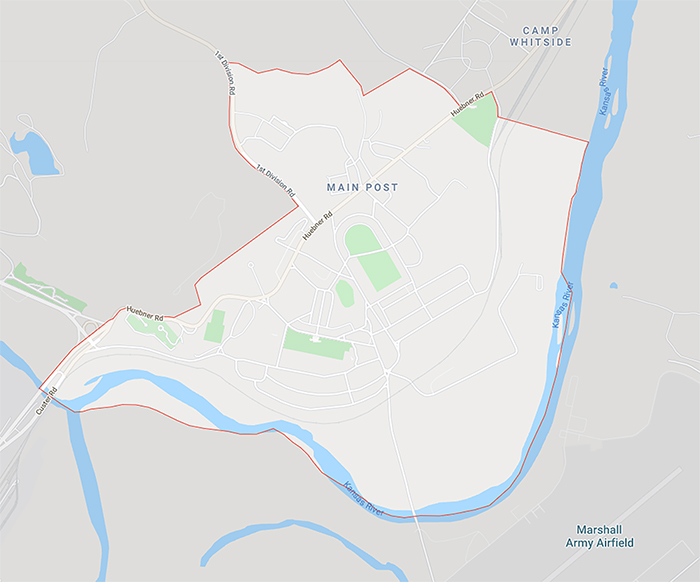Fort Riley Main Post Stormwater Study Ranks System Upgrades for Next 30 Years
Posted on Wednesday, January 15th, 2020 by Affinis CorpIn Federal Services, Stormwater, tagged in Tags: federal, fort riley, stormwater study, usace

Fort Riley’s Main Post was constructed in the early 1900’s. Given the age of the facilities, there were few maps, as-builts, or internal historical knowledge about the stormwater system. Fort Riley’s Directorate of Public Works (DPW) was addressing system problems, but wanted a comprehensive improvement plan that considered all of the Main Post’s needs and helped them plan future improvements.
Working with the United States Army Corps of Engineers (USACE), the Affinis team was selected to perform a stormwater study for the Main Post and provide DPW with a comprehensive storm water system improvement plan.
To begin the project, our team surveyed the site. Using the data gathered, we created a GIS model, which could be used to locate information. The model was also added to the existing USACE database to unify and update their records. In addition, it was put into EPA SWMM (a stormwater system design computer model) to determine where problems were. Each storm sewer segment was ranked based on two factors: pipe condition and hydraulic capacity.
Our team evaluated approximately 500 pipe segments for the project. Along with the GIS model, we video inspected about 20 percent of the pipes, using footage captured by TREKK Design Group, LLC via CCTV. This helped us assess the condition of many reinforced concrete pipe segments to provide an accurate pipe condition rating.
After studying the pipes, we created cluster maps of problem areas. This will allow the DPW to replace a group of pipes if one fails, as opposed to tackling projects one pipe segment at a time. Using this approach boosts efficiency and helps prioritize maintenance dollars. To each cluster, we assigned costs for upgrades. Those estimates were divided by the rating to create a weighted schedule for improvement.
When asked about the report, Jacob Richardson, PE, Hydraulic Engineer, US Army Corps of Engineers had this to say, “In general, the report and appendices are well-organized, and the information is clear. The figures are clear and easily understood.”
Upon completing the project, the DPW and USACE received preliminary design, sizing, and cost information for the entire 600-acre site. Their internal engineering staff can use these details to plan improvements, and it can help the DPW budget for system upgrades for the next 30 years.